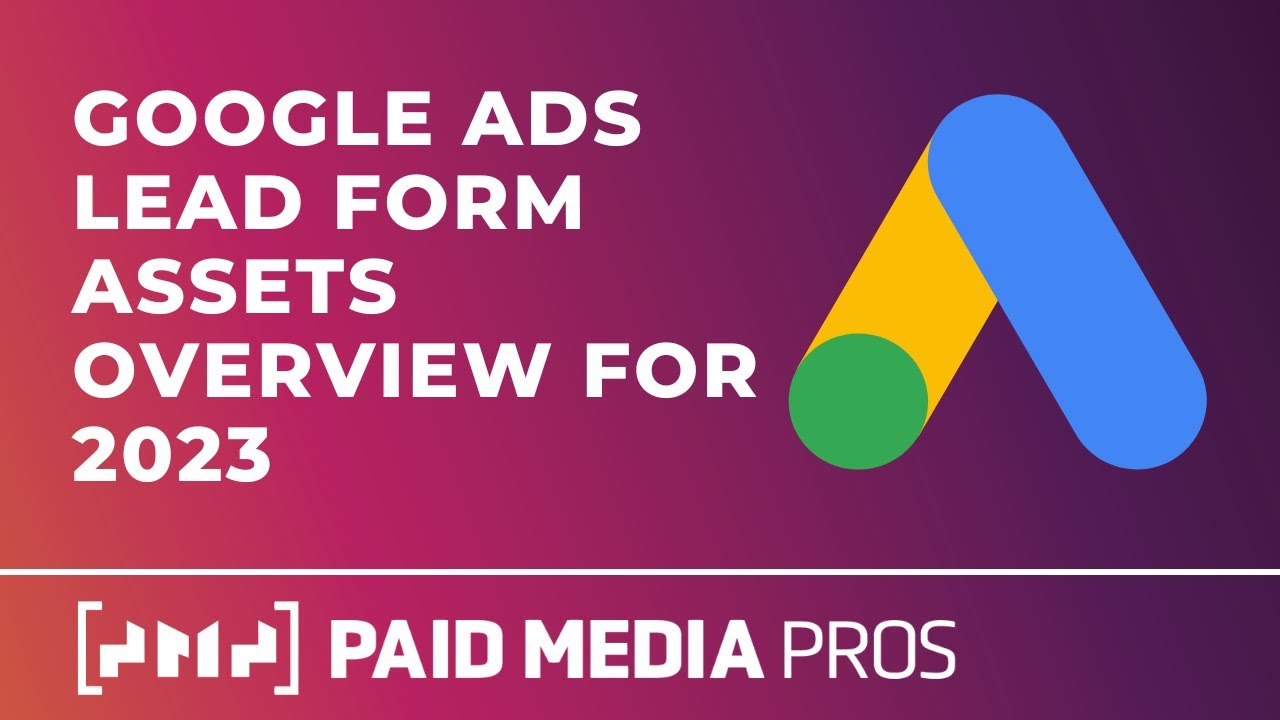- google ads lead form
- 1. Lead Forms Now Available for Discovery Campaigns in Gmail and YouTube Home Feed
- 2. Compatibility of Lead Forms with Android, Desktop, and Supported Countries
- 3. Compatibility and Limitations of Lead Forms with Different Ad Types
- 4. Information Required in Lead Forms and Conversion Tracking
- 5. Managing Lead Forms in Google Ads: Creation, Editing, and Removal
- 6. Customization Options for Lead Forms and Privacy Policy Requirement
- 7. Optimization and Eligibility Criteria for Lead Forms in Different Campaigns
- 8. Integration and Download Options for Lead Form Data
In the ever-evolving world of digital advertising, Google Ads never fails to surprise us with its innovative features. Andthe latest addition to its arsenal, the introduction of leadforms for Discovery campaigns, is certainly turning heads.
Imagine being able to effortlessly collect valuable information from potential customers – their full name, email, phone number, and even their postal code – all with just a few clicks. These leadforms offer customization options galore, allowing advertisers to optimize for volume or qualified leads.
And the cherry on top? They can seamlessly integrate with CRM systems using webhook integration.
Get ready to take your lead generation game to a whole new level with Google Ads lead forms.
| Item | Details |
|---|---|
| Topic | Unlocking the Power of Google Ads Lead Form: Expert Strategies and Insider Tips |
| Category | Ads |
| Key takeaway | In the ever-evolving world of digital advertising, Google Ads never fails to surprise us with its innovative features. |
| Last updated | December 28, 2025 |
google ads lead form
A Google Ads lead form is a feature offered by Google Ads that allows advertisers to collect contact information from users who may be interested in their products or services. Lead forms are compatible with various campaign types, including Search, Video, Discovery, and Display campaigns.
The lead forms require at least one single-image ad and are compatible with Android or desktop users in countries that support showing lead forms. The form fields in the lead form include Full name, Email, Phone number, and Zip/Postal code.
Opening a lead form counts as a click, and submitting information counts as a conversion. Advertisers can customize the lead form by adding a business name, headline, description, and qualifying questions.
The lead forms can be optimized for more volume or more qualified leads, and the collected leads can be downloaded in a CSV file or integrated into a CRM system using a webhook integration. However, it is important to note that lead forms have specific compatibility and eligibility requirements based on the campaign type and country.
Key Points:
- Google Ads lead forms allow advertisers to collect contact information from potential customers.
- Lead forms work with various campaign types like Search, Video, Discovery, and Display.
- Required form fields include Full name, Email, Phone number, and Zip/Postal code.
- Opening a lead form is counted as a click, and submitting information is a conversion.
- Advertisers can customize the lead form with business name, headline, description, and qualifying questions.
- Lead form optimization options include volume or qualified leads, and leads can be downloaded or integrated into CRM systems.
Sources
https://support.google.com/google-ads/answer/9423234?hl=en-AU
https://support.google.com/google-ads/answer/10014398?hl=en
https://leadsbridge.com/blog/google-lead-form-ads/
https://support.google.com/google-ads/answer/10283862?hl=en
Check this out:
💡 Pro Tips:
1. When creating lead forms, make sure to include a clear and concise privacy policy URL to ensure compliance with data protection regulations.
2. Consider customizing the message displayed after form submission with a compelling headline, description, and call-to-action to maximize the impact of your lead generation efforts.
3. Optimize your lead forms based on your campaign goals – prioritize volume if you need a large number of leads, or focus on qualifying questions if you want more qualified leads.
4. To integrate lead forms with your CRM system, use webhook integration by generating a webhook URL and key. This will allow you to seamlessly transfer lead data to your CRM for efficient follow-up.
5. When editing lead forms, keep in mind that you can modify the design and messaging, but you cannot change the information fields that are required from users. Plan accordingly to collect the necessary data for your business.
1. Lead Forms Now Available for Discovery Campaigns in Gmail and YouTube Home Feed
Google Ads has recently expanded its lead form feature to include Discovery campaigns in Gmail and the YouTube Home Feed. This means that advertisers can now capture leads directly within these platforms, offering a seamless experience for users.
Lead forms in Discovery campaigns can be accessed by Android or desktop users in countries where lead forms are supported.
2. Compatibility of Lead Forms with Android, Desktop, and Supported Countries
To ensure compatibility with lead forms, users must be on either an Android or desktop device in countries that support lead form display. This ensures that advertisers can effectively reach a wide audience and gather valuable leads.
By targeting specific countries and platforms, advertisers can tailor their campaigns to the most relevant audience.
3. Compatibility and Limitations of Lead Forms with Different Ad Types
While lead forms are compatible with various campaign types including Search, Video, Discovery, and Display, there are certain limitations to consider. Lead forms require at least one single-image ad, and multi-image carousel ads are not currently supported.
This is an important consideration when creating ad assets for lead form campaigns.
4. Information Required in Lead Forms and Conversion Tracking
When setting up lead forms, advertisers have the option to collect specific information from users. The lead form fields include Full name, Email, Phone number, and Zip/Postal code.
Opening a lead form counts as a click, and submitting information counts as a conversion. This allows advertisers to track the success of their lead generation efforts and measure their return on investment.
5. Managing Lead Forms in Google Ads: Creation, Editing, and Removal
Google Ads provides advertisers with the ability to create, edit, and remove lead forms directly within the platform. Advertisers can easily access and manage their lead generation campaigns, making it convenient to make any necessary adjustments or updates.
This flexibility allows advertisers to optimize their lead forms and improve their overall performance.
6. Customization Options for Lead Forms and Privacy Policy Requirement
When creating lead forms, advertisers have the opportunity to customize various aspects of the form. This includes adding a business name, headline, and description.
Advertisers can also choose the information they want to collect and add qualifying questions to ensure they receive high-quality leads. It is important to note that a privacy policy URL is required to comply with data privacy regulations.
7. Optimization and Eligibility Criteria for Lead Forms in Different Campaigns
Lead forms can be optimized for either more volume or more qualified leads, depending on the advertiser’s goals. This flexibility allows advertisers to align their lead generation strategy with their specific objectives.
However, it is important to ensure that lead forms meet specific criteria, such as using a conversion-focused bidding strategy, in order to be eligible for certain optimization options.
8. Integration and Download Options for Lead Form Data
Once leads are captured through lead forms, advertisers have several options to integrate and download the data. Leads can be downloaded in a CSV file, allowing for easy access and analysis.
Additionally, leads can be integrated into a CRM system using a webhook integration. Advertisers can generate a webhook URL and key for integration, streamlining lead management and further enhancing their overall lead generation process.
In conclusion, Google Ads lead forms offer a powerful tool for advertisers to capture valuable leads directly within platforms like Gmail and the YouTube Home Feed. By understanding the compatibility, customization options, and integration capabilities of lead forms, advertisers can unlock the full potential of this feature and drive successful lead generation campaigns.











